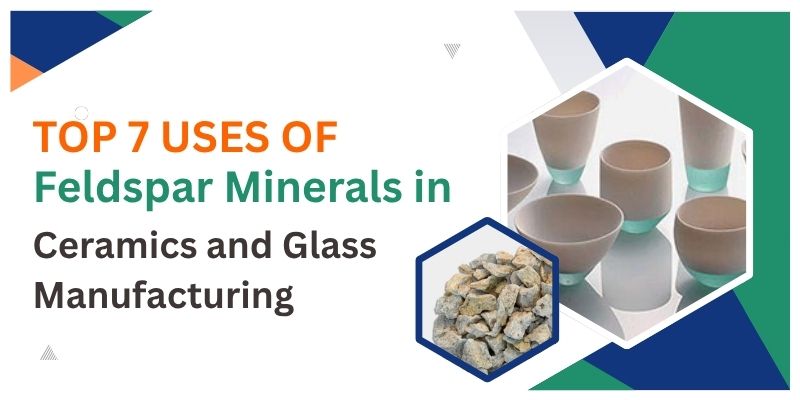
Top 7 Uses of Feldspar Minerals in Ceramics and Glass Manufacturing
Feldspar minerals are some of the most abundant rock-forming minerals on Earth, and they play a crucial role in several industrial applications. Among their most valuable contributions is in the ceramic and glass industry, where their chemical and physical properties make them indispensable. This article will explore the top 7 uses of feldspar minerals in ceramics and glass manufacturing and how they influence product quality and production efficiency.
What Are Feldspar Minerals?
Before diving into their applications, it’s important to understand what feldspar minerals are. To begin with, feldspar meaning refers to a group of rock-forming aluminosilicate minerals that contain varying amounts of potassium, sodium, and calcium. Feldspars are categorized into three primary types: orthoclase (potassium feldspar), albite (sodium feldspar), and anorthite (calcium feldspar). Their chemical composition and crystalline structure make them highly valuable in manufacturing processes.
1. Fluxing Agent in Ceramics
Feldspar's fluxing function is among the most important functions of feldspar in ceramics. Feldspar will reduce the melting point of quartz and ensure an effective viscosity of the ceramic mixture during firing. This is important to allow for better densification and therefore better strength of all final ceramic products, from tiles to sanitaryware.
2. Glass Formation in Manufacturing
In the manufacture of glass, feldspar is a source of alumina and potassium and sodium, which give some industrially important properties to glasses, such as hardness, durability, and resistance. Feldspar acts as a melting agent—facilitating the melting action of other components in glass manufacturing and ultimately increasing the value of the glass products—bottles, flat glass and domestic glassware.
3. Strengthening Ceramic Bodies
Feldspar minerals play a vital role in enhancing the strength and durability of ceramic bodies. During firing, they melt to create a glassy phase that effectively bonds the other materials, resulting in sturdy and long-lasting tiles, insulators, and pottery.
4. Enhancing Glaze AppearanceThe feldspar in ceramics is a component in the glazing process that provides a smooth and shiny finish. It also has the capability to lower the melting point of the glaze and enhance the glazing with the ceramic body, resulting in a homogeneous, glossy surface that is decorative and useful.
5. Improving Thermal Resistance
Feldspar minerals make both ceramics and glass thermally more resistant. Products that are made with feldspar can withstand high temperatures without deforming, which is important when making cookware, industrial ceramics, and heat-resistant glass.
6. Optical Clarity in Glass
Feldspar plays an essential role in glass processing because it has way better optical clarity than limestone or silica. In addition to decolorizing glass and changing the refractive index, feldspar is particularly valuable in making optical glass, laboratory glassware, and high-end decorative glass products.
7. Reducing Production Costs
Finally, feldspar can help lower your overall production costs. As a natural flux, feldspar limits the amount and need for expensive synthetic chemicals. Furthermore, using feldspar helps to lower your production costs because feldspar is a well-known material that is widely available and can mix with the other raw materials used in either the glass or ceramics industries.
Conclusion
From strengthening ceramic bodies to enhancing the appearance and quality of glass, feldspar minerals serve a variety of essential purposes. Whether it's the use of feldspar in ceramics for a better glaze finish or feldspar in glass manufacturing for improved optical clarity, their role cannot be overstated. As demand grows in both industries, feldspar continues to be a key ingredient in shaping high-quality, durable, and aesthetically pleasing products.